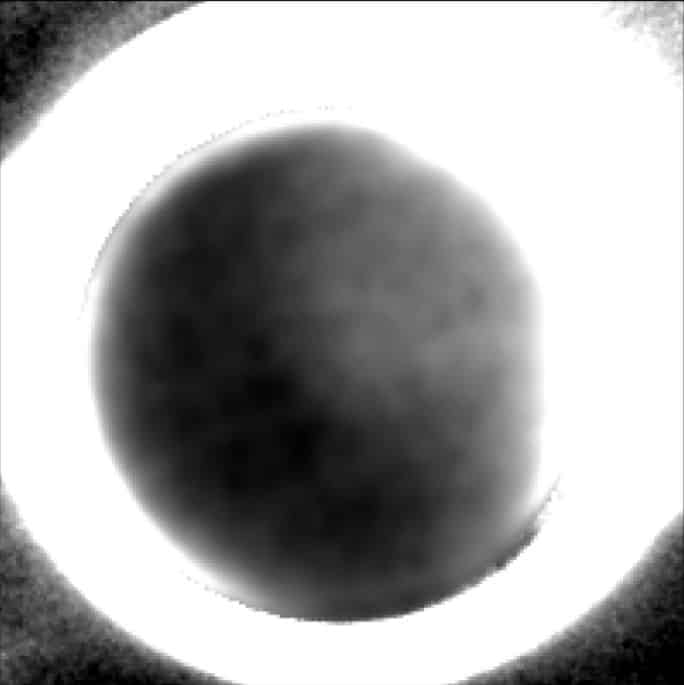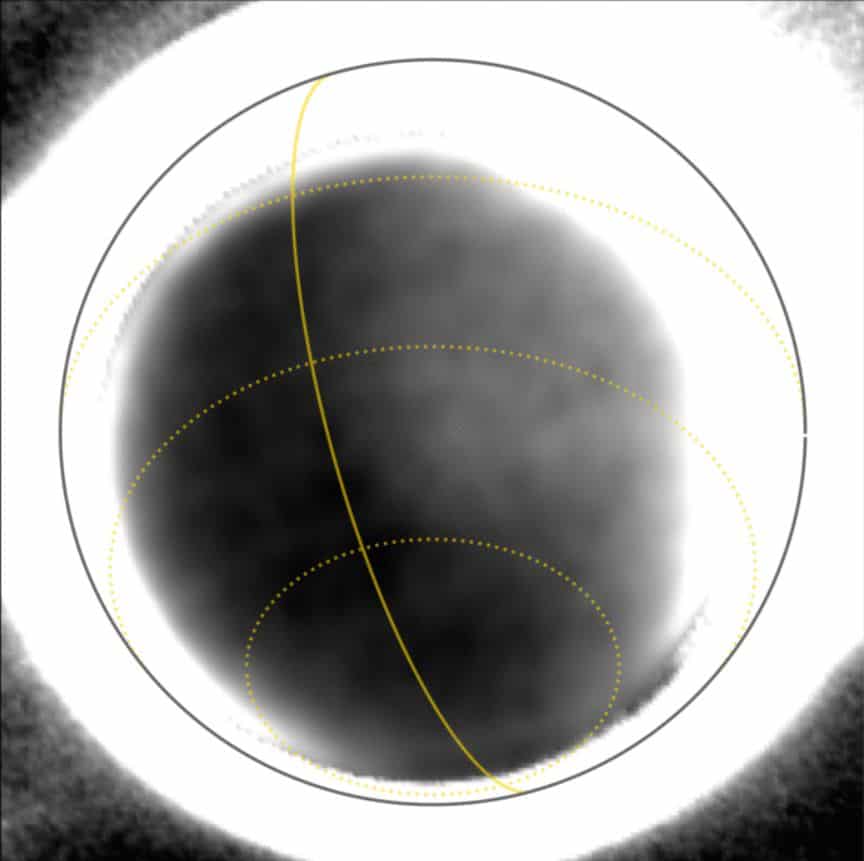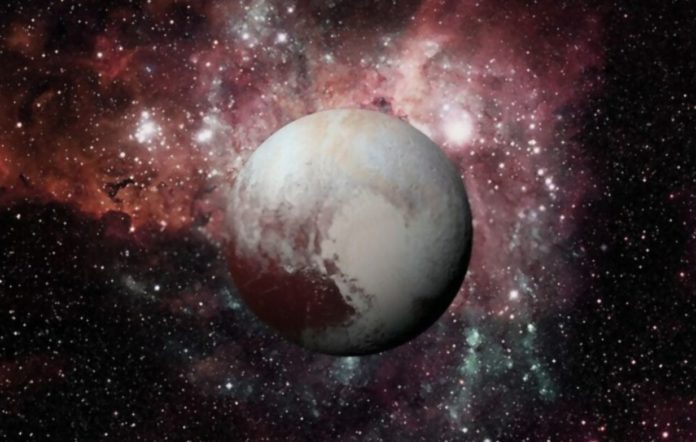It was a historic moment for NASA when its New Horizons probe returned the first close-up photographs of Pluto and its several moons. Research headed by Tod Lauer of the National Optical Infrared Astronomy Research Lab of the National Science Foundation in Tucson, Arizona, has now enlarged the New Horizons team’s photo album to include Pluto’s “dark side,” a region that was not directly exposed by the sunlight.
On July 14, 2015, New Horizons flew within 7,800 miles (12,550 kilometres) of Pluto’s frozen surface before continuing on to the Kuiper Belt Object Arrokoth and beyond at a speed of 9 miles per second (14.5 kilometres per second).
However, as the spacecraft prepared to leave Pluto, it took a sequence of photographs of the dwarf planet’s dark side.
By contrast, Pluto’s hazy atmosphere was illuminated by the distant Sun and appeared to form a ring of light around Pluto’s dark side. New Horizons had a clear view of Pluto’s southern hemisphere at the time of this experiment, which was in the midst of its winter seasonal darkness, which is similar to Earth’s long, dark winters in the Arctic and Antarctic, except that on Pluto, each season lasts 62 Earth years.
Fortunately, the dim sunlight reflecting off the icy surface of Pluto’s largest moon, Charon, which is about the size of Texas, illuminated a piece of Pluto’s dark southern hemisphere. Researchers were able to extract data of Pluto’s southern hemisphere that could not be gained any other way thanks to that sliver of “Charon-light.”
“In a startling coincidence, the amount of light from Charon on Pluto is close to that of the Moon on Earth, at the same phase for each,” said astronomer Tod Lauer from the National Science Foundation’s National Optical Infrared Astronomy Research Observatory in Tucson, Arizona, and the study’s lead author.
“At the time, the illumination of Charon on Pluto was similar to that from our own Moon on Earth when in its first-quarter phase.”
On Oct. 20, the researchers published the photograph and their scientific interpretation in The Planetary Science Journal.

It was difficult to see details on Pluto’s surface under the dim moonlight. According to New Horizons coinvestigator and Project Scientist Hal Weaver of the Johns Hopkins Applied Physics Laboratory, scattered light from the Sun (which was nearly directly behind Pluto) produced a complex pattern of background light that was 1,000 times stronger than the signal produced by Charon-reflected light when looking back at Pluto with the Long Range Reconnaissance Imager (LORRI). Furthermore, the bright ring of atmospheric haze that encircled Pluto was overexposed, creating additional artifacts in the images.

“The problem was a lot like trying to read a street sign through a dirty windshield when driving towards the setting Sun, without a sun visor,” said John Spencer, New Horizons co-investigator and planetary scientist at the Southwest Research Institute in Boulder, Colorado, a study co-author.
The final image was created by subtracting the artifacts from 360 photographs of Pluto’s dark side and another 360 images taken with the same geometry but without Pluto in the picture, leaving only the signal produced by Charon-reflected light.
Alan Stern, the Southwest Research Institute’s New Horizons lead investigator, added that “the image processing work that Tod Lauer led was completely state of the art, and it allowed us to learn some fascinating things about a part of Pluto we otherwise would not have known.”
While there is still some digital noise in the map, it does show a few conspicuous features on Pluto’s dark surface. The most visible is a dark crescent zone to the west, where neither sunlight nor Charon-light was falling at the time New Horizons took the photographs. A big, brilliant patch halfway between Pluto’s south pole and its equator is also visible. It’s possible it’s a deposit of nitrogen or methane ice, like Pluto’s icy “heart” on the other side.
Pluto’s south pole and the area around it look to be coated in a dark substance, which contrasts sharply with Pluto’s northern hemisphere’s whiter surface. The difference could be due to Pluto’s recent completion of its southern summer, according to the researchers (which ended 15 years before the flyby). The research believes that nitrogen and methane ices in the south melted from the surface throughout the summer, converting directly from solid to vapour, while dark haze-particles settled over the region.
Future Earth-based instruments might be able to validate the team’s image and other hypotheses, but it would require Pluto’s southern hemisphere to be in sunlight, which won’t happen for another roughly 100 years.
“The easiest way to confirm our ideas is to send a follow-on mission,” Lauer said.
Image Credit: NASA
You were reading: Researchers capture the first close-up images of Pluto’s “dark side”
